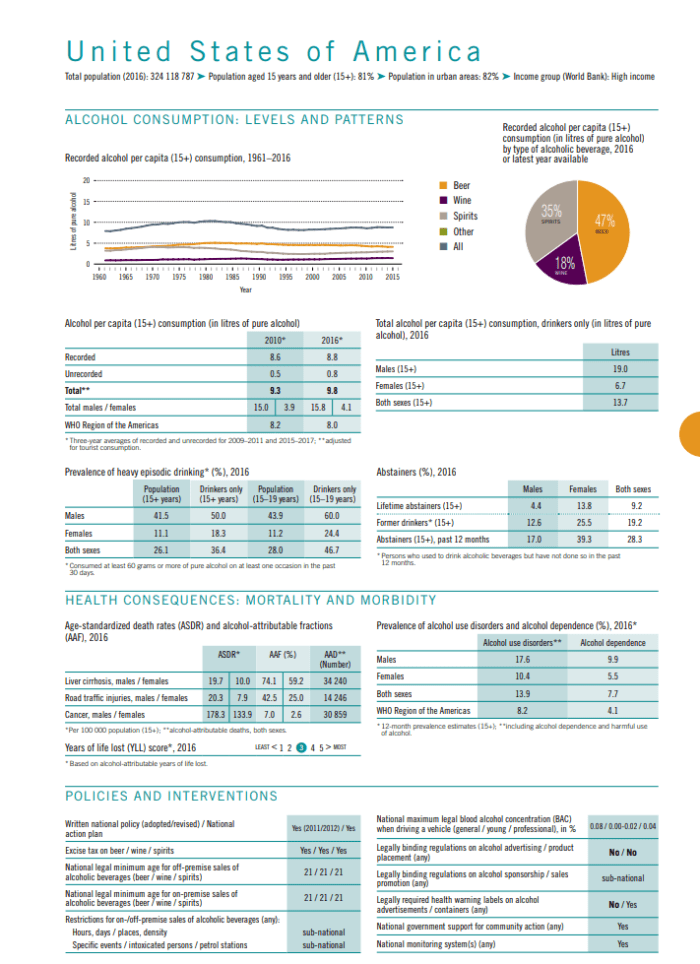Drizly is an app in United States which allows people to order alcohol from nearby shops and get it delivered to their doorstep. On election Tuesday, November 3, 2020, Drizly saw a major increase in their sales compared to the previous four Tuesdays. Overall there was a 68% increase in alcohol sales.
There were some differences based on cities, political support, type of alcohol, according to the data below:
- Major cities saw the highest increases in alcohol use with Washington DC reporting a 133% increase, New York City a 120% rise, Chicago a 55% increase and Los Angeles a 34% rise.
- Heavily Republican areas saw a 33% increase, Democratic cities saw a 75% increase, and swing states saw a 54.84% increase in alcohol use.
- Alcohol use even increased by 55% for millennials, who are more inclined to be sober than other age groups.
- In terms of type of alcohol, beer increased by 13%, liquor by 38% and wine by 45%.
The increase in sales is not arbitrary. Big Alcohol pushes the idea of consuming alcohol to celebrate, to cope with stress, and propagates for people to deal with with many other situations and emotions by consuming alcohol.
The election is no different.
The Absolut vodka brand, owned by Big Alcohol giant Pernod Ricard, launched a full blown campaign targeting the election in the United States. The campaign was called “Vote First, Drink Second”. The campaign tagline itself places alcohol use at the level of importance with voting – the democratic right of people – and links alcohol consumption directly to the election.
The campaign was launched on September 29, right before the first presidential debate and spanned TV, out-of-home, digital and social media. It also aired on the New York Times podcast The Daily.
Many alcohol promotion messages linking the election to alcohol use were pushed throughout the campaign including the following:
- “Your Vote Can Shake or Stir the Election,”
- “Save Your Drink for After the Vote,” and
- “Drinking Can Wait. Your Vote Can’t.”
These messages expose the Big Alcohol playbook:
- Make it seem like alcohol is an integral part and intimately linked to an event of cultural and/ or societal importance, such as Presidential elections.
- Make it seem like it Big Alcohol cares for social causes, such as voter turnout, while still promoting their profit interest; virtue signalling while exploiting any occasion to sell more alcohol.
- Make it seem like everyone uses alcohol and the question is merely when to consume alcohol, not whether or not; or even the reality that almost a third of the U.S. population lives free from alcohol.
This type of persistent marketing across many channels bombards people with alcohol glamorizations and seeks to strengthen the pervasive alcohol norm – a strategy well used by the Big Alcohol across the world. It seems it has paid off this time too, judging from the sales recorded by Drizly.
Compounded alcohol harm
Data from the World Health Organization shows that alcohol harm is of epidemic proportions in the United States. The country has a total per capita alcohol consumption of 9.8 litres which is above the average for the WHO Americas region. Men over 15 years of age who consume alcohol have a per capita alcohol use of 19 litres. The rate of binge alcohol use among youth between 15 to 19 years who consume alcohol is 46.7%. Population wise almost one-third of all 15 to 19 year old youth binge on alcohol. 17.6% of males suffer from alcohol use disorder, with 9.9% of men being dependent on alcohol.
Movendi International reported in 2019 about the epidemic of alcohol use disorder in the country. Data from the National Council on Alcoholism and Drug Dependence (NCADD) showed:
- Almost 20 million people in the United States suffer from an alcohol use disorder. This translates to 1 in 12 people suffering from alcohol use disorder.
- 7 million children grow up in families with parental alcohol use disorder.
- More than 50% of adults have a family history of alcohol use disorder.
Alcohol delivery further compounds the existing alcohol burden. As Movendi International previously reported alcohol delivery apps have been found to supply alcohol to minors and people already alcohol intoxicated.
Added to this is the fact that alcohol use has been rising during the ongoing COVID-19 pandemic in the United States like in many countries globally. Increased alcohol use adds to the already existing heavy alcohol burden in the country and is likely to lead to long-term alcohol harm lasting longer than the pandemic itself.
Big Alcohol’s insidious marketing tactics such as using the election to drive alcohol consumption even higher aggravates things even further during a time when the World Health Organization has advised to limit alcohol availability as a tool to help contain COVID-19.
Sources
Yahoo! money: “Alcohol sales soared 68% on Election Day, with Democratic states buying the most: Drizly“
Marketing Dive: “Absolut promotes voting with its first TV ad in 3 years“
Social Samosa: “#VoteResponsibly: Absolut says Vote First, Drink Second“

